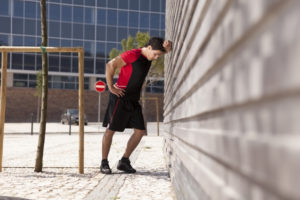Returning to sport is recommended after an injury, illness or pregnancy. Indeed, after a long period of lack of exercise, inactivity settles down. As a result, overweight and obesity may result.

From the hepatic point of view, a build up of adipose tissue associated with a sedentary lifestyle can cause the challenges to the liver. This can eventually lead to more serious health problems, including steatosis.
Note that an interruption of physical activity causes a decrease in muscle mass and bone density. The body becomes weaker, subject to many injuries and health issues.
The most important is to gradually restart activities that you like.
My Liver Exam gives you some tips to return to sport without putting your health at risk.
Think about making a liver check-up beforehand
Before resuming sport after a long period of inactivity, consider consulting your doctor. Indeed, a review is necessary to assess whether the recovery of physical activity is safe, especially for patients over 40 years old presenting pulmonary or cardiovascular diseases.1
Return to sports with already practiced activities
Starting a new sports can dangerously test the body: injuries, big aches, and problems of tension. Gently recapturing a known activity allows you to find your bearings.
Think about stretching
The goal of this step is to improve the flexibility of your skeleton and your muscles. Stretching is twice as important when the body is no longer used to sport. And the more you stretch, the less you’ll get aches the next day.2
They must be performed at the beginning and at the end of the session, before the warm-up and after training.
Warm up in order not to resume sport brutally
If you want to put on your jogging again to push back the ground, the main thing is to gradually get back to it. A careful warm-up and a few quick walking sessions can re-habituate the heart to the effort.
For example, for running, it is recommended to perform sessions of 15 to 20 min during the first 2 or 3 weeks, then gradually increase the duration by passing to 30 minutes and then to 45 mn.1 Think progressivity Rather than intensity.
Do not hesitate to start by fast steps rather than by running. During the period of inactivity, your tendon has weakened: it takes a good week to recover from an effort.2
Stop all effort in case of pain
Pain associated with the resumption of sport may occur. It is necessary to mark a downtime of 2 or 3 days before retrying the experiment. Proper hydration and massage3 may be beneficial in soothing and draining the body during this recovery. Remember that pain or fatigue are good indicators of saturation.
Healthy Diet and Healthy Lifestyle
Linking sport and food balance is a first step in a healthy lifestyle. Proteins, carbohydrates, fats, fruits, vegetables and dairy products make up the staple foods of the athlete.4
The progressive recovery of sport is excellent to preserve its health, and to feel good in the daily life. Combined with a healthy lifestyle, the liver can better regenerate its cells and fully ensure its vital functions.
A coach may very well inform you of the procedure to follow in order to understand the return to a sporting activity.5
Associated content : Why to combine healthy diet and regular physical activity?
References :
- http://sante-medecine.journaldesfemmes.com/faq/52035-reprise-du-sport-apres-un-arret
- http://madame.lefigaro.fr/bien-etre/comment-reprendre-le-sport-apres-une-longue-interruption-220415-96279
- http://sante-medecine.journaldesfemmes.com/faq/27945-massage-definition
- http://www.personal-sport-trainer.com/blog/les-bases-nutrition-du-sportif/
- http://www.personal-sport-trainer.com/blog/les-bases-nutrition-du-sportif/
